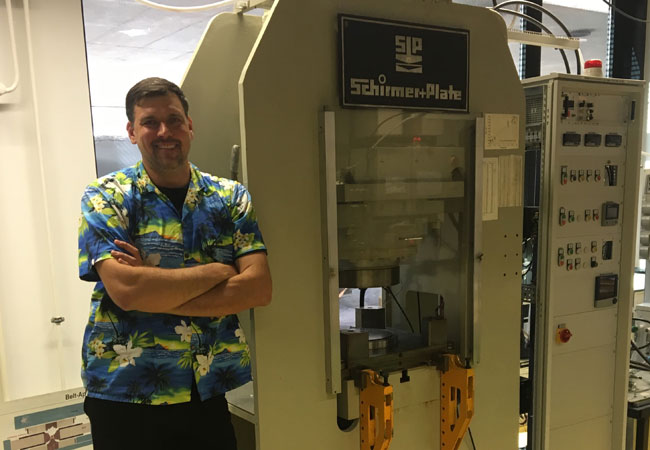
Unlike flawless gems, fibrous diamonds often contain small saline inclusions. These give hints to scientists about the conditions under which diamonds are formed deep in the Earth’s mantle. A research team including scientists from Goethe University solved the puzzle of the formation of these inclusions by simulating conditions of extreme heat and pressure in the laboratory.
Diamonds are crystals of carbon that form deep in the Earth’s mantle underneath the oldest continents, the cratons. They are transported to the surface of the earth in exotic magmas called kimberlites by explosive volcanic eruptions. Previous studies had always determined that diamonds include fluids containing sodium and potassium, but the origin of these fluids was unknown.
“In order for these inclusions to form, parts of the Earth’s oceanic crust and their sediment layer had to be submerged beneath the cratonic continents in what is known as a subduction zone. These zones are located at depths of over 110 kilometres at a pressure of over four gigapascals, or 40 thousand times the atmospheric pressure,” explains Michael Förster, the first author of the study that was published in the scientific journal Science Advances. The submergence of the earth’s crust has to happen quickly so that the diamond can form before the sediment starts to melt at temperatures over 800 degrees Celsius, and react with the cratonic mantle.
For the high-pressure experiment in the laboratory, scientists from Sydney, Mainz and Frankfurt stacked marine sediment and peridotite (rocks from the Earth’s mantle) in four-millimetre capsules and placed them under high pressure and extreme temperatures. At pressures of four to six gigapascals – corresponding to depths of 120 to 180 kilometres – small salt crystals formed from the reaction between the two layers. Their potassium to sodium ratio corresponded exactly to the saline fluid inclusions in diamonds. In experiments with less pressure, corresponding to depths of less than 110 kilometres, these salts were not present. Instead, potassium was absorbed from the recycled sediment by mica.
“Unlike previous models that attributed the source of the salts to seawater, the sediments represent a plausible source of potassium,” says the mineralogist Professor Horst Marschall from Goethe University. “The potassium concentration in seawater is too low to explain the saline inclusions in diamonds.” Magnesium-rich carbonates, important components of the kimberlites, also came about as a by-product of the reaction.
Publication: Michael W. Förster, et al. Melting of sediments in the deep mantle produces saline fluid inclusions in diamonds, in Science Advances, Vol.5 No. 5, DOI: DOI: 10.1126/sciadv.aau2620; https://advances.sciencemag.org/content/5/5/eaau2620









